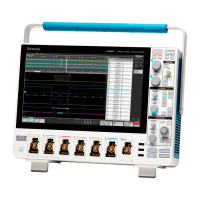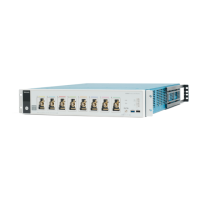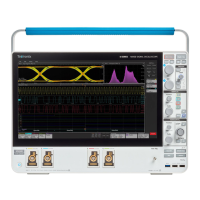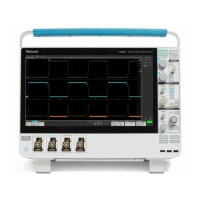Trigger types
The available trigger types include:
Edge: This is the simplest and most commonly used trigger type, used with analog signal. An edge trigger event occurs when the trigger
source passes through a specified voltage level in the specified direction (rising or falling signal voltage). When the edge trigger source is
set to Internal, the instrument uses an internally generated 60 Hz signal to generate a trigger
. The 2 Series MSO also have an AUX In
connector that is available as another source for the Edge trigger.
Pulse Width: Trigger on pulses that are inside or outside a specified time range. Can trigger on positive or negative pulses.
Timeout: Trigger when no edge transition is detected within a specified time.
Runt: Use Runt trigger to trigger on a pulse amplitude that crosses one threshold but fails to cross a second threshold before recrossing
the first. It can detect any positive or negative runts, or those that are inside or outside a specified time range. These pulses can also be
qualified by the logical state of other channels.
Logic: These are special-purpose triggers that are primarily used with digital logic signals. Logic triggers are available on the main (A) and
B event triggers.
Setup & Hold: Trigger when a logic input changes state inside the setup and hold times relative to the clock. This type triggers on a setup
and hold violation.
Rise/Fall Time: Trigger on pulse edges that traverse between two thresholds at faster or slower rates than the specified time. The pulse
edges can be positive or negative.
Bus: This trigger is used with both analog and digital signals to set up parallel and serial buses. A bus trigger event occurs when the
instrument detects a bus pattern that you set in a bus trigger configuration menu. You must add a bus to the Waveform view before you
can set the trigger parameters for that bus.
Trigger modes
The trigger mode determines how the instrument behaves in the absence of a trigger event:
• Normal trigger mode enables the instrument to acquire a waveform only when it is triggered. If no trigger occurs, the instrument does
not acquire a waveform, and the last waveform record acquired remains on the display. If no last waveform exists, no waveform is
displayed.
• Auto trigger mode enables the instrument to acquire a waveform even if a trigger does not occur. Auto mode uses a timer that starts
after a trigger event occurs. If another trigger event is not detected before the time out, the instrument forces a trigger. The length of
time it waits for a trigger event depends on the time base setting.
Auto mode, when forcing triggers in the absence of valid triggering events, does not synchronize the waveform on the display. In other
words, successive acquisitions are not triggered at the same point on the waveform. If valid triggers occur, the display becomes stable.
Trigger holdoff
Trigger holdoff can help stabilize triggering. When the instrument recognizes a trigger event, it disables the trigger system until acquisition
is complete. In addition, the trigger system remains disabled during the holdoff period. Adjust holdoff to obtain stable triggering when the
instrument is triggering on undesired trigger events.
A digital pulse train is a good example of a complex waveform. Each pulse looks like any other, so many possible trigger points exist. Not
all of these will result in the same display. The holdoff period allows the instrument to trigger on the correct edge, resulting in a stable
display.
Triggering concepts
238
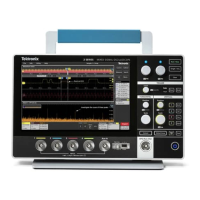
